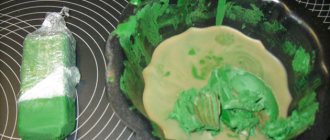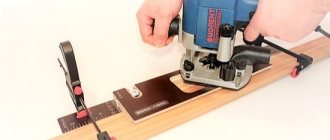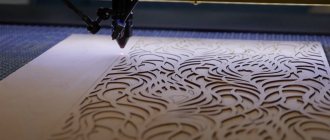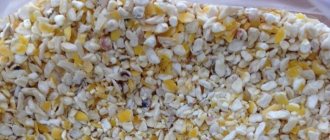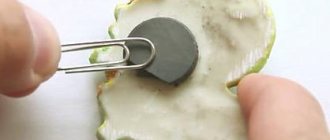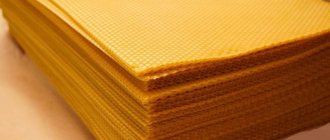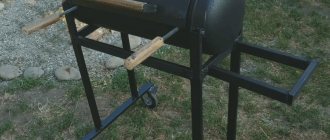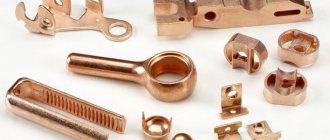To fasten elements by soldering, it is necessary to use special materials that have a lower melting point. Many radio amateurs use the old approach - solder. It is necessary to use flux or acid along with it.
Modern compounds called pastes help speed up the soldering process. They initially include all the necessary components and do not require any additives.
We’ll try to figure out what the features of this material are and how to apply solder paste correctly.
Solder paste and its properties
Initially, these compositions were used in SMT-type technologies. Currently, their scope of distribution has expanded significantly. The paste includes the following main components:
- Solder is in powder form with varying degrees of crushing. As a rule, alloys selected include tin, lead, and silver. Lead-free pastes have become especially widespread.
- Flux for degreasing.
- Necessary additives for binding. They simplify the installation and fastening of SMD components on boards. Larger board sizes require a more viscous paste.
- Activators and additional components.
High-quality soldering is ensured if the storage period and conditions are met. Most components have a shelf life of no more than six months. For storage and transportation, it is necessary to ensure a regime from +2 to +10°C.
In the photo of solder paste you can see their typical modifications. However, when choosing, you need to pay attention to the material’s compliance with the following requirements:
- high level of soldering work with the strength of the resulting connections, preventing spattering and the formation of balls;
- necessary adhesive parameters, thanks to which the elements are held until soldering;
- resistance to spreading during initial heating;
- absence or minimal amount of easily removable flux remaining after work;
- applicability of dispensing or screen printing technology;
- permissible for long-term storage.
Materials for soldering wires without a soldering iron
The difference between the methods is the shape and temperature of the solder applied. In this case, the shape of the material with which you can solder the wire without a soldering iron becomes decisive. This is solder, which can come in various forms:
- the familiar composition of rosin, tin or a tin-lead mixture in ingots;
- the same solder, rolled into thin foil, 0.5-0.7 mm wide;
- paste, where solder is a mixture made from powders and an acid solution of various metals and rosin;
Since it has become possible to solder a contact without a soldering iron, various forms of material have appeared, the use of which allows the use of a primitive heating source: the open fire of a lighter, an alcohol lamp or an ordinary candle.
Read also: What are the three main views in the drawing?
The use of materials in different states still has its differences, for example, the choice of technology for how to solder a wire without a soldering iron into a headphone differs from the one that can be used when soldering dishes. And the method of restoring the board will be different from how to solder a garland without a soldering iron.
Varieties
The market widely offers products from the best solder paste manufacturers under the brands Qualitek, UNIVERSAL, Felder, HERAEUS, ALPHA, etc. The entire product line can be divided into groups by type:
- According to the chemical composition of the flux - halogen-containing and halogen-free.
- According to the need for laundering - those requiring processing and those not requiring. Pastes of the first type can be washed with water (water-soluble) or special liquids.
- Depending on the solder - lead-containing and lead-free.
- By temperature – low, medium and high temperature.
If the paste is not washed off with water, then it contains rosin. In this case, the parts must be washed with solvents.
It is important to take into account this feature - an increase in the degree of solderability of elements and SMD components is accompanied by a decrease in the reliability of fastening. And, for example, halogen-containing compounds improve manufacturability, but are characterized by somewhat low reliability.
Results.
Just like MECHANIC, it can be used for soldering conductors using improvised means, such as a lighter, the main thing is not to overdo it with the temperature, otherwise the film will begin to degrade. And smear more.
Well, don’t forget about the softness of the alloy and that the composition is much more fluid than its counterparts at a tip temperature of 250-300°C.
Because of this, it spreads over a larger area and creates a thinner coating. Also, when soldering multi-core wires, the solder is “absorbed” more intensely, distributed over the surface and between the wires. Otherwise, I like everything - I’m actively using this paste at the moment and have no complaints. You can significantly reduce the operating temperature of a soldering iron or hair dryer, and if dismantling of elements is required, it goes much faster. This will be especially convenient for owners of small soldering irons like the TS100. If the appearance of the board is not important, you don’t have to wash off the flux residues, because... he is neutral. I checked it on the same breadboard. Regarding storage. At first I bothered and screwed on the protective cap, then I hammered it in and left the needle. It sits on the table at room temperature and does not have time to dry out in a week - it squeezes out normally. Also, according to tradition, I asked for a coupon 9addfa
, reducing the price to
$7.99
As always, I welcome constructive criticism in the comments. All the best =)
Important Specifications
If you are interested in the question of which solder paste to choose, then you need to pay attention to the physicochemical properties of the mixture. They depend on the presence of binding components that affect the consistency, adhesive parameters, and level of adhesion.
These properties include:
- composition of elements - presence or absence of lead, presence of alloying additives;
- size of solder particles according to IliS;
- the shape of the particles, which affects the dosage possibilities;
- viscosity, affecting application technology - the need for a dispenser or stencil;
- level of solderability, determined by the oxidation and contamination of solder particles.
If no-clean pastes do not cause corrosion, then water-washable pastes can cause such processes at the soldering site, since they include some organic components.
What is flux? What flux should I use for tinning the body?
The purpose of the flux is to facilitate the soldering process and ensure the strength of the connection between the solder and the metal of the body.
One of the barriers to achieving successful soldering is surface impurity (contamination and oxidation). Contaminants can be removed by mechanical cleaning, but oxidation increases with increasing temperature, impairing solder adhesion to the repair surface. The metal has a thin layer of oxides or sulfides, no matter how clean it appears. The purpose of the flux is to remove this layer and should prevent the formation of a new oxide layer during solder application. Flux not only prevents oxidation, but also provides dry cleaning and performs a wetting function by reducing the surface tension of the molten solder, helping it flow better over the surface. This way, the solder will not stick to an unprepared metal surface; it will form balls. On the prepared surface, the solder spreads and sticks normally. Flux paste for tinning.
Flux paste is used for tinning the body. It is a kind of primary soil. It contains acid (zinc chloride or hydrochloric acid) and solder in powder form. The acid chemically cleans the surface and removes oxidation, converting it into a soluble salt, while the powder simultaneously eats into the metal, leaving a very thin layer (tin or tin with lead) that improves solder adhesion when applied to the repair area.
After application, the paste needs to be heated and the residue wiped off with a rag.
The flux paste is activated by an acid (zinc chloride or hydrochloric acid) and must be removed after soldering is completed. If the flux is based on hydrochloric acid, then it can be neutralized with water and soda, and then washed with clean water. If the flux contains zinc chloride, then acetone will be required for neutralization. You can also use sodium dichromate.
Particles from the flux paste can remain in the pores and small cavities of the weld, which can cause corrosion. Therefore, before tinning and applying solder, it is necessary that the holes and recesses be welded.
Making at home
Often ready-made soldering material is not at hand, so it is advisable to know how to make solder paste with your own hands. To do this, you need to prepare a rod of tin-lead solder and fat for soldering. If you don’t have the second component, then regular Vaseline plus LTI-120 flux can replace it.
The solder must be thoroughly crushed using a file, a needle file and a mechanical attachment with a drill. The crumb should be fine. It is collected in a container and Vaseline is added in a 1:1 ratio, as well as a little flux.
The ingredients are mixed. For quality mixing, the mixture should be heated in a water bath. You can store it in a large medical syringe. Using it, the paste will then be applied to the required areas.
